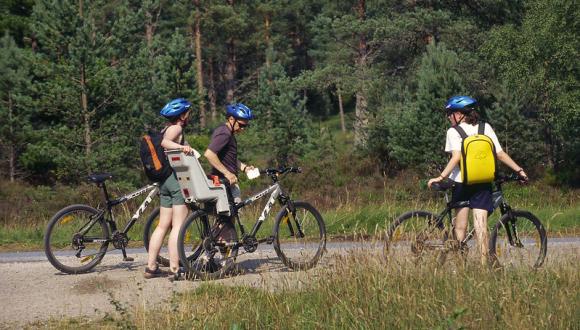Southern Scotland: what to see
Explore from the Mull of Galloway, Scotland’s most southerly tip, to a wild and spectacular stretch of the east coast.
Mull of Galloway
Discover Scotland’s most southerly point. The best views are to be had from the top of the Mull of Galloway lighthouse – the Isle of Man’s outline is surprisingly clear. Then meet some of the residents of Mull of Galloway RSPB reserve. A huge colony of cliff-nesting seabirds is among the wildlife found here.
Birdwatching from west to east
Caerlaverock National Nature Reserve is one of Scotland’s oldest and largest wetland reserves. Saltmarsh makes the Solway Firth a special place – for wildlife and visitors – and thousands of geese descend on this west coast spot each September. Vast flocks of water-birds and whooper swans overwinter on the reserve.
On Scotland’s east coast is another haven for birdwatchers, walkers and wildlife lovers – though the landscape is very different. Huge numbers of seabirds nest on the dramatic cliffs of St Abb’s Head National Nature Reserve. Take your pick of the cliff-top routes to see guillemots, kittiwakes and razorbills – and breathtaking views.
Botanic gardens
Trees from all over the world have been nurtured in Dawyck Botanic Garden, one of the finest arboretums anywhere. See how you measure up against the mighty silver fir planted in 1680. Other treasures in this woodland garden span the seasons: from snowdrops and daffodils to a blaze of autumn colour.
Exotic species feel quite at home in Logan Botanic Garden, thanks to the Gulf Stream. Lose yourself among trees, shrubs and other plants from the Southern Hemisphere, including more than 50 species of eucalyptus. Be sure to stop off at the nearby Logan Fishpond, a 10,000-year-old blowhole that showcases some of our most amazing marine life and geology.
Wildlife watching
The ancient woodland of Glenkinnon Burn is home to red squirrels, butterflies, insects and many breeding birds. More than 190 species of flowering plants and over 160 species of lichen grow within this protected site. Take to the Biodiversity Trail to find out more.
Follow a stretch of the 24-mile Galloway Kite Trail at Loch Ken for a chance to see red kites. Feeding time at the feeding station often attracts a flying frenzy of these magnificent birds of prey.
Galloway Forest Park is Britain’s largest forest park, and its 300 square miles of wild beauty include the Wild Goat Park and the nearby Red Deer Range. Close-up encounters with both the goats and deer can be easily arranged.
Learn about one of our most elusive birds of prey courtesy of the Tweed Valley Osprey Project. It has set up the Wild Watch Centre in Glentress Forest, where you can watch live footage of nesting ospreys from May to August (and recorded highlights at other times).






